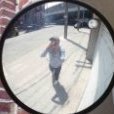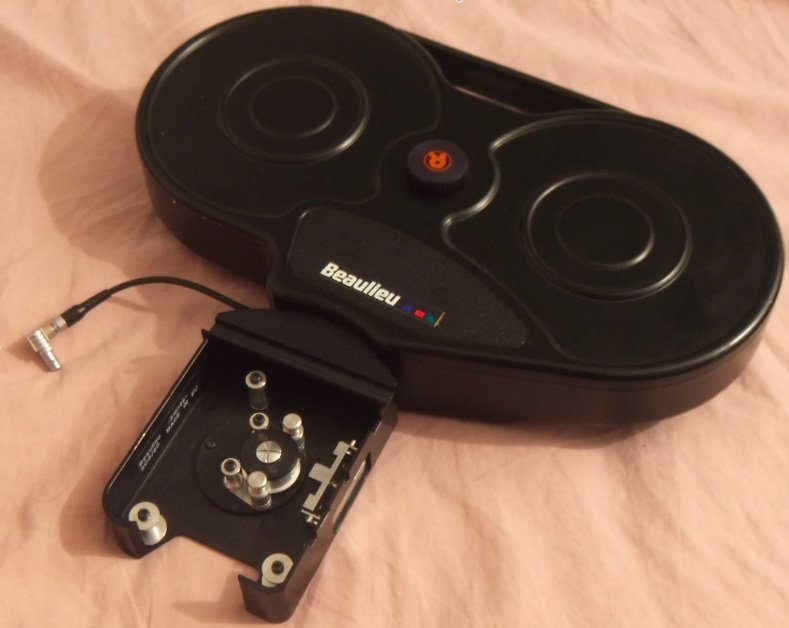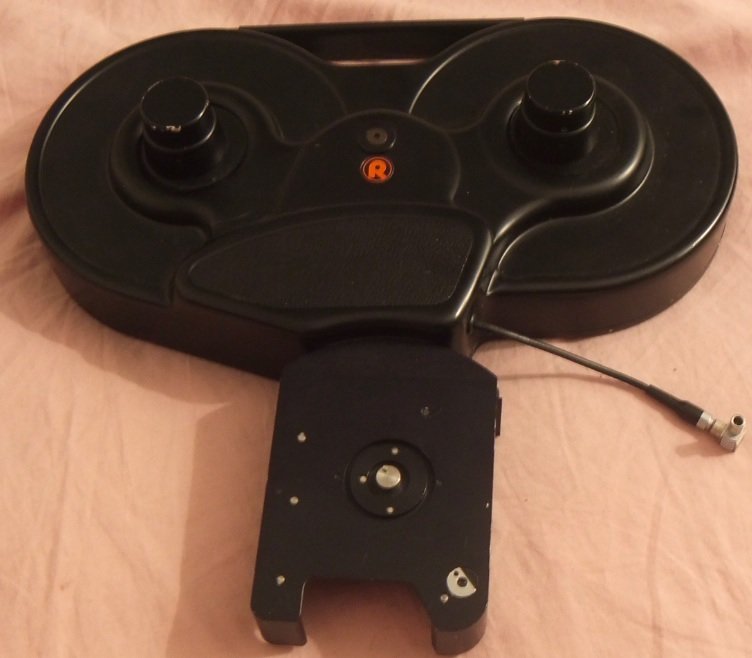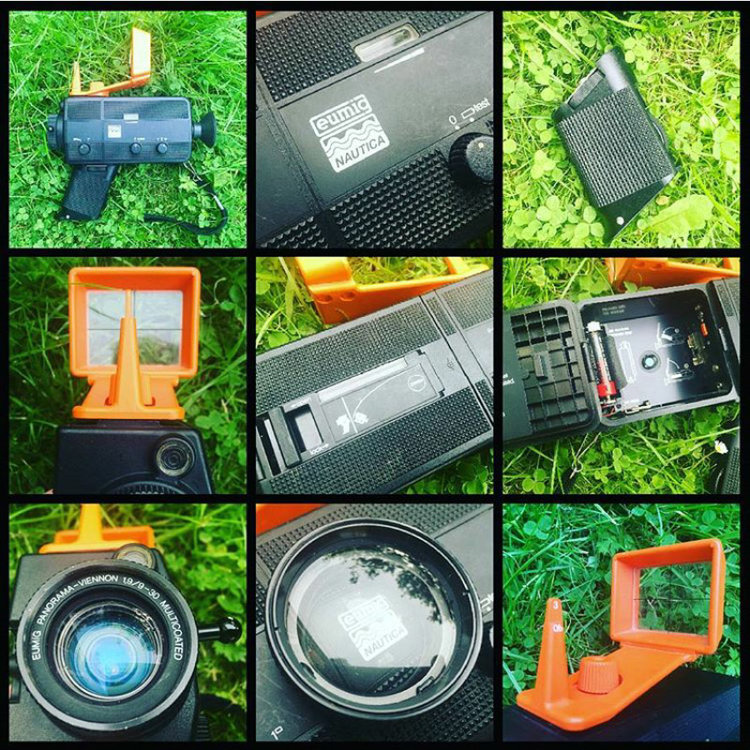Search the Community
Showing results for tags 'Super 8'.
-
Hello, I recently found my grandpa's old Bolex 480 macrozoom super 8 camera, which I want to test out to see if it works, however it seems like the battery holder was lost. I am trying to look for a spare but I am finding it really hard to find any spare battery compartments of this specific camera, so I was wondering if I could use battery compartments from similar models? Any advice on how to find a new batter compartment is greatly appreciated!
-
Hi all, I'll get right into it: I'm new to the world of cine film and definitely new to the super 8 world (not new to the film photography world, or digital cine world), but I'm looking to get into it and pick a super 8 camera up. I'm a uni student studying fashion image making and my current module is about fashion film, and making our own short film. For a while i've wanted to experiment with shooting a film similar to the Wong Kar Wai film "Fallen angels", specifically all the ULTRA wide shots used throughout, from my own research, was an 8.6mm lens, but on 35mm. My main question and issue while researching for this idea myself, is whats a good way to achieve this in super 8 format? from what i understand, most super 8 cameras have a fixed lens, so very little interchangeability, and the models that do have interchangeable lenses are pretty pricey (at least for a uni student 😅), I've also not come across any lenses or adapters that can get me down to the focal length I need. I have seen a few fisheye adapters about that would get me to a similar focal length, but I'd rather a lens/ adapter thats rectilinear, not a big fan of the fish eye effect, but if its all thats available, i can work with it. Has anyone done any thing similar? if so what was your setup? Any recommendations of cheaper super 8 cameras that either have an ultra wide lens, or that would take a lens/ adapter? Thanks for your help, and apologies for how long this is.
-
Made a reel out of all the concert footage I shot in 2023. The super 8 footage was shot on a Beaulieu 4008 ZMII and the 16mm was shot on a Bolex H16. https://youtu.be/WgHjehnVAkA?si=BnNhBzU_E0mt8ZBW
-
Finally the Cyberspace VR surfing that was promised to us in the 90's and 2000's is at our fingertips. Worlds and avatars beyond euclidean geometry and imagination are reality at last. Meet people from across the world in teasing 3-D, exploring vast worlds of fantasy together, or dance your tail of to your favourite music with a colourful crowd. Finding people online is no longer shackled to text or voice, but now everything is possible all the while experiencing 'real' proximity. But digital space can also be a gateway to meeting people in real life, not as distant strangers but as close friends. Making for highly emotional and gorgeous experiences that make lasting core memories. Be them saved in the digital domain, on Polaroids or on the retina. I wanted to mix all these wonderful mediums of expression together and show what wonderful things can come from VR and beyond.
- 2 replies
-
- vr
- virtual production
- (and 7 more)
-
Hi! I'd like to sell my Pro8mm "Classic Pro" with max 8 modification. It will come with the 8-64 zoom, a Cosimcar Pentax 6mm 1.2 prime, and the single lithium ion cell/charger. This camera has seen probably 10 reels since purchased from Pro8mm. It's as new as it was from the company. It's in beautiful hammertone finish. I have some Hoya color correction and ND filters I'll throw in too. This is a camera I will miss, but I have to save up for a relocation so it must go. I'd like $1750.00. That's a $940.00 discount from what Pro8mm currently charges. Here is the Pro8mm listing: http://www.pro8mm.com/Merchant5/merchant.mvc?Screen=PROD&Store_Code=01&Product_Code=CAMERA_CLASSIC&Category_Code=S8 This camera is in my opinion the best Super 8 camera you can get. The Logmar might be modern and perfect, but this is classic Super 8.
-
REAL FILM at film festivals... Kind of makes sense, right? Well, not on the modern "film" festival circuit. Every film festival I have attended or been a part of the last five years (live or online) is primarily about HD. Usually I am the only filmmaker who shoots on film when my films play at a festival, unless the festival is truly specific to ACTUAL FILM, like the United States Super 8 Film and Digital Video Festival. You see how the title of the festival states FILM and digital video...? Recently I attended the 2022 Spring Austin Micro Film Festival. A really cool Festival! I had two experimental films play, WAITING FOR LEGROS and WAITING FOR LEGROS 2: THE EYE OF THE TIGER Both films shot on Super 8. I was surprised to see another film the was shot on film at the festival, and it was really good! I am pleased to announce that my latest short film THE UNMENTIONABLES (16mm, Tri-X 7266) will play at the 2022 Oregon Short Film Festival. I hope to see more films shot on film in the future! Don't give up on it!
-
This is a bit of a long stretch, but I'm looking for some of the more obscure Super 8 equipment that would have been used along with Super 8 full-coat for sound. This would have been stuff from the Super 8 Sound Company in the 70's so not the easiest to come by. This would have been: - A Super 8 Sound Recorder itself for recording onto full-coat - A Super 8 Sync Block - A viewer that was modified for taking full-coat as well as picture I'm up to my knees in actual full-coat so I don't need any of that, but finding stuff to utilize it for some projects is difficult. I've also talked to Phil at Pro8mm before already as well, but I'm hoping to maybe find someone who has some of this stuff stored away somewhere long forgotten! You can see this sort of stuff in action in this old video as well:
-
- super 8
- magnetic audio
-
(and 1 more)
Tagged with:
-
Currently, my 5008 MS is in Sweden with Björn being serviced, re-celled, and having a Angenieux 8-64mm collimated - it's a lens I'm very happy with as I've always found it to be sharper than the Schneider 6-66mm. That said, I've recently been offered a chance to buy a 10mm 1.8 retrofocus Angenieux which I've seen be compared to the Cinegon 10mm! But is it worth buying this and then paying for it to be collimated if I've already got a 8-64mm?
- 6 replies
-
- beaulieu
- beaulieu 5008
-
(and 6 more)
Tagged with:
-
This is a very nice Super 8 Sound Recorder II. It's in Excellent Condition. It's useful for its unique ability to sync it's playback to almost any film camera even 1 f pulse per frame super 8 cameras. Great for music video production with non crystal controlled Super 8, 16mm, 35mm cameras. Comes with AC adapter and Leather case.
-
Anyone interested in buying these machines. I never use them anymore and since the cameras stopped working I haven't been able to put the time or money into getting them up and running again. Comes with everything you need besides the camera's to transfer your 8mm/super 8 and 16mm films to digital. If anyone's interested I can take some pictures. Thanks! - Hunter
-
Hello! I have a Nizo S8 that requires a PX-13 battery for the light meter. I've done some research and found that the "Wein MRB625 1.35V Zinc-Air Battery" was made to replace it, but given that its availability isn't so accessible I'm looking at other options. I've read that the #675 hearing aid zinc-air battery can replace it, but have been seeing mixed reviews. Does anyone have any experience/insight on this? Wondering what my best option is. Thanks!
-
I've been experimenting with old Sync Sound Super 8 systems and am seeing what's possible now with digital transfers. There's the early Bell and Howell Filmosound system where a cassette recorder plugs into compatible cameras and the audio is recorded onto a tape. Then the tape deck is plugged into a filmosound projector and (if you shoot reversal) then you can project back image with the tape deck syncing up as well. My question is can this be transferred digitally using the rapid sync pulse that is recorded onto the other side of the tape as you record audio? Is there a program, or plugin or someway of having this audible sync pulse control the playback speed of the footage? From what I understand originally the tape deck would have controlled the playback speed of the projector, but when I have the film scanned frame by frame for transfer that would lock it into a constant framerate instead of being variable like it would be through the projector. On the higher end side of things, if I have one of the old Super 8 INC Sound Recorders and record audio onto fullcoat while having the recorder plugged into my camera, is syncing digitally any easier than it would be with the Bell and Howell system? (besides the fact that full coat would be way better quality) TLDR: Can I have a sync pulse control the playback speed of a digital transfer? (Oh also I'm searching for one of the fullcoat recorders if anyone has a lead!)
-
Just wanted to share a short film I recently shot on Kodak 200T with a Nikon R10. Criticisms are welcome although I really just hope you are amused for a couple of minutes.
- 10 replies
-
- 1
-

-
Hello guys and gals, So, yesterday, while processing some Tri-X Super 8, something nightmareish happened during the second developpement after re-exposure : after 1 min in the 2nd developer (where the emulsion properly reacted and darkened), it slightly started to lift from the plastic and then it litteraly disloved into the developper : no floating gelatin flakes, just a plain black developer... The weird thing is that I already processed Tri-X this way, here is an example : https://vimeo.com/326184819 Here is my protocole, I have included as much info as I can : 1 – Soaking in a 25°C water bath. 2 – 1st Developer : Ilford Multigrad 1+9, 20min (continuous agitation on 1st minute, then 10sec each minute), 25°C. 3 – Hardening stop bath : Adox EcoStop 1+29 + 40ml/L of Tetenal Hardener. 6 min, 20°C, continuous agitation. (https://www.fotoimpex.com/chemistry/tetenal-hardener-to-be-added-to-the-fixer-or-stop-bath-1000-ml.html?cache=1564733928) 4 – Washing, runing water, 2 minutes. 5 – Bleach : Potassium permanganate 0,4% + Sulfuric Acid 10% equal part, 6 min, 20°C, continuous agitation. 6 – Washing, runing water, 2 minutes. 7 – Clearing bath, Sodium metabisulfite 6%, 2 min, 20°C, continous agitation. 8 – Washing, runing water, 2 minutes. 9 – Hardening stop bath : Adox EcoStop 1+29 + 40ml/L of Tetenal Hardener. 6 min, 20°C, continuous agitation. 10 – Washing, runing water, 2 minutes. RE-EXPOSURE : 2x1min 80W 1m in a white tank filled with water. 11 – 2nd Developer : Ilford Multigrad 1+9, 4min (stand), 25°C. The same solution I used as 1st developer. And that's where the emulsion dissolved.... Usually, after that, I use an hardening fixer for 5 minute, washing 10 min on runing water, rinse with distilled water, let it dry and digitalise with a Retroscann Universal. It's fastidious, but cheap ! Side notes : - Processing in Lomo Tank. - I know Ilford says not to use Ilford Multigrade for processing film (Universal PQ is recommanded instead), but through my test phase it was the only thing I had on hand, so I tried and it worked as you could see on vimeo. - I've never found any information about the shelf lif of the Tetenal hardener. As it is supposed to be mixed with Stop or Fix, I mixed it with the Adox Eco Stop to be sure I won't use an hardening bath tha is no longer working. Anyway, I mixed a new solution and it was still a disaster. - I use the hardener to compensate the softening of the emusion by the bleach. One bath before to strenghten, one bath after to reinforce. I thing the bleach isnt to blame, otherwise it the continous agitation in the clearing bath would have the same mechanical effect, so I guess it is a chemistery issue. The film is perfectly fine during re-exposure, bleaching is complete, after touching the film, the emulsion is normal. - I dont know why the developper is dissolving the emulsion on second use but work perfectly fine on the first one. So that's it, if anyone have an idea, i'm all ears ! Thanks ! Jérémy
- 3 replies
-
- reversal
- reversal process
- (and 12 more)
-
Hello folks, I'm new on cinematography.com, i'm getting into super-8 as a member of an analog associative Photo/Cinema called ZebraLab based in Geneva : https://zebralab.info/. I am also a photographer by job. With the guys from the lab, we are/have built two machines to cut reels of Fomapan R100 DS8x30,5M to 4x S8x15M to be loaded in Lomo Reloadable Cartridge. That make it really affordable as we buy from Foma factory shop, we are around 7€ for the film and around 3€/film for processing (detail below). According to Super8Wiki, Lomo Reloadable Cartridge acts as 64T/40D -> http://super8wiki.com/index.php/Super_8_Cartridge_Notch_Ruler (down of the page). We would like to turn them into ASA 100, but we don't know wich notch ruler we should trust : - The one from Super8Wiki : super8wiki.com/images/6/6f/Cartridgenotchruler.pdf - Or that one who says the Super8Wiki notch ruler is not that good : http://www.peaceman.de/schmalfilm/super8/S8_Notch_Tools_v1.0.pdf We asume that : as the Fomapan R100 is black and white and that the contrast change induced by the CCA filter is not that big of a deal for us whe should turn the ASA 40D to an ASA 100T, thus cuting a filter notch down on the cartridge and enlarging the upper notch, correct ? Also, as several of us own (and ZebraLab also) a Canon 814 XL-S in working condition, we would like to give a shot at turning one of the cartridge to ASA 400, as the film stock can be pushed 2 stop during processing : we are processing black and white reversal with a mix of two method : Potassium Permanganate + Sulfuric Acid bleach and using a photopaper developper, as the emultion if soften by the bleach, we do hardening bath before to the bleach and one hardening fix bath after second developpement. The hardening concentrate is the Tetenal one (Aluminium Sulfite + Acetic Acid but that need confirmation). You can watch the result here on a Kodak Tri-X 200. (i found the result to be a bit too much contrasted...) But, according to the Super8Wiki notch ruler we are not sure that the Canon 814 XL-S can read ASA 400, even if it say so on different website (that would mean not a notch is pushed by the cartridge, 6 notches without the filter notch, and we tried cuting into an old K40 to make it ac as a ASA 400T but it doesn't seem to make a difference for the exposure sensor, that same camera read and exposed correctly the Kodak Tri-X 200 that you can watch on vimeo...). So : is it possible to turn a cartridge to ASA 400T (or around like a 500T), and would a Canon 814XL-S be able to read it, it can read Vision3 500T, so i guess yes, but how ? That's it for the moment, if you have solutions and/or questions, i'm up for it ! Bye, Jeremy
-
I just bought a Canon 814 XL-S and noticed that even when I change the filming speed, from 9 to 16 to 24, it the motor sounds the same for all settings. I do not have film loaded. But when I press the SM button, the motor does crank much faster. Has anyone experienced anything like this? Am I on an incorrect setting? Would appreciate any advice anyone has for me. Thank you in advance.
-
I'm on the cusp of buying the kit I need to convert a Super 8 projector for scanning. I will either cannibalise my nice old Bolex (slightly reluctantly) or buy a cheap ELMO, or something similar. But assuming that the requirements for the motor will be similar across projectors, I wonder what torque I might need? And I can use a 200 step motor or would I need the more expensive 400 step motor for greater accuracy? Thanks for any advice.
-
I recently purchased a Nizo 481 Super 8 camera and the motor runs fine, but the needle that indicates exposure does not appear. The batteries for the camera itself and the light meter are both new. I did run a battery test by moving the master switch from the black '0' forward to the black dot, and the needle will only appear then. I'm probably doing something basic wrong, but would really appreciate any guidance. Thank you!
-
Hello everyone, I've managed to lose my 1014 XL-S battery cover, meaning I can't use the camera. First question, is does anyone have a junk 1014 XL-S I can buy to use for parts? Second question is does anyone know whether the battery covers for any other models are interchangeable? Eg the 814 or 514 XL S? I know the 1014 standard isn't a fit (I think). Thanks for any help! D
-
Hey all. Just got my new roll of E-6 Ekta back and I am really happy with it. It looks pretty great on the projector, but of course, it looks a little bit less great on the scan. I did some color work on Adobe Premiere Pro and was wondering what the best export settings would be. In the future, I'd like to share the footage on some social media, but I fear the quaint grain of Super 8 will become gross and bitty once compressed on these platforms. What are the best settings to prevent that from happening? Right now, I'm working with a 1080p scan, at 50 CBR and Rendering at the Maximum Depth, and a frame rate of 15fps. Thanks so much.
-
Hello everyone, If this has been covered in a previous post please link, I was unable to find much on a few cursory searches. I am requesting advice or suggestions for a good lab who I can send Super 8 cartridges to for processing, telecine, and most importantly good quality post and colour grading. I am based in the UK (London). Normally I rely on someone local who hand-process the film and does all the post for me. I have always been very happy with his work, but I'm interested to see what kind of results I can get from a 'lab'. I am aware of Andec in Berlin ( andecfilm.de ) and the S8 Reversal Lab in the Netherlands ( super8.nl ). Though I have no experience with their service or even if they provide a Grading/Post service. Anyway, I am requesting suggestions, based on experience, of good labs. I'm happy to ship internationally NY, LA etc. for good results. Ideally it would stay EU though. Keep in mind, I am not seeking cinematic quality, for me the decision to use Super8 has always been a point a shoot, in camera, portable film format, so I am not seeking perfection. My main concern is over levels of noise and uneven exposures which I feel might be remedied with a higher quality transfer and greater attention to detail in the grading process (never mind my lack of attention to these details during the filming). I sincerely appreciate your advice, suggestions and shared knowledge. All the best
-
Hi: NEW KODAK EKTACHROME 7294 FULL TEST vs OLD EKTACHROME vs FUJIFILM VELVIA vs FUJIFILM PROVIA. THIS FILM IS NARRATED IN ENGLISH AND SPANISH ESTA PELÍCULA ESTÁ NARRADA EN ESPAÑOL E INGLÉS. The totally new Kodak Ektachrome 100D 7294 is the ideal motion film for nature cinematography, documentaries, musical clips, telecine transfers for 4K UHD television, film schools, direct film projection o film archive. Ektachrome 7294 is the first reversal colour film developed with 21st century technology: 1) superb latitude, of 3 stops, 2) fine grain, 3) natural colours , 4) accurate skin reproduction, 5) moderately enhanced colour saturation, 6) exceptional sharpness, 7) low fade colours, for archive. In “Ferrol 7294” you can watch the new Ektachrome 7294 in several situations: 1) shadows and highlights, 2) interior, opening at f 1.0, 3) confronted to Fujifilm Velvia 100, 4) confronted to Fujifilm Provia 100, 5) confronted to old Ektachrome 7285, 6) new Ektachrome sub expose half stop, 7) new Ektachrome over expose half stop, 8) new Ektachrome exposed at 200 ASA and push processing one stop, 9) new Ektachrome exposed at 400 ASA and pull processing two stops Link:













